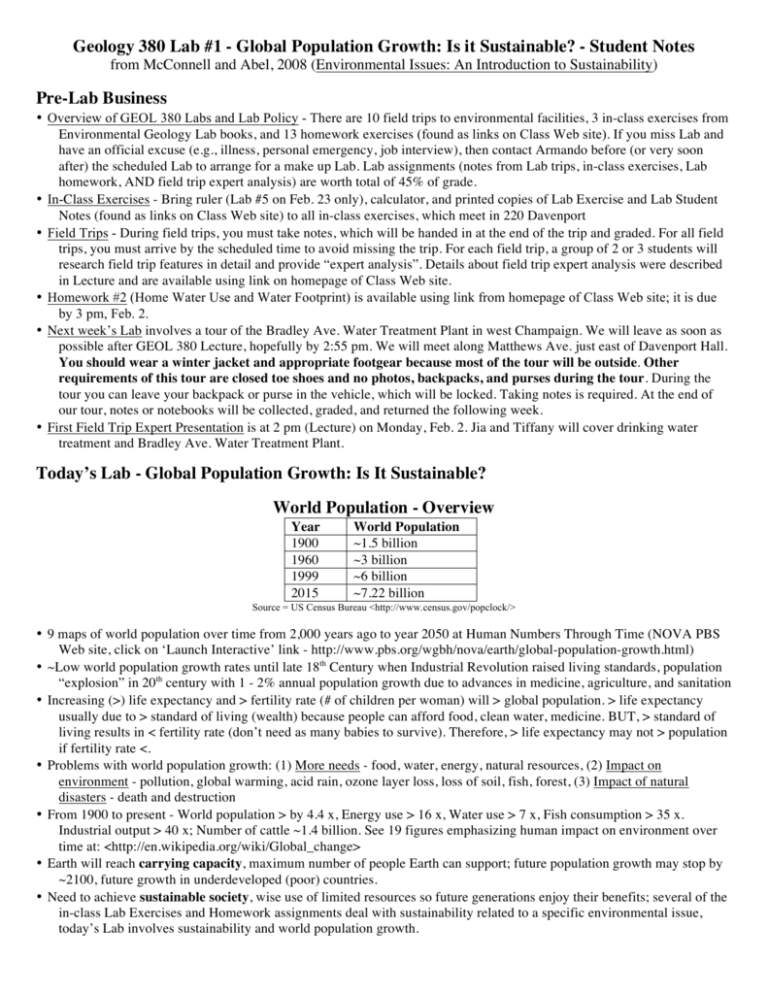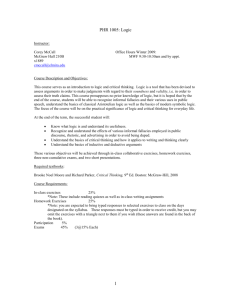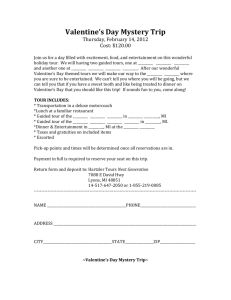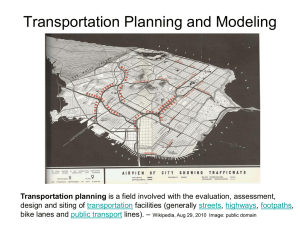Geology 380 Lab #1 - Global Population Growth: Is it Sustainable
advertisement

Geology 380 Lab #1 - Global Population Growth: Is it Sustainable? - Student Notes from McConnell and Abel, 2008 (Environmental Issues: An Introduction to Sustainability) Pre-Lab Business • Overview of GEOL 380 Labs and Lab Policy - There are 10 field trips to environmental facilities, 3 in-class exercises from Environmental Geology Lab books, and 13 homework exercises (found as links on Class Web site). If you miss Lab and have an official excuse (e.g., illness, personal emergency, job interview), then contact Armando before (or very soon after) the scheduled Lab to arrange for a make up Lab. Lab assignments (notes from Lab trips, in-class exercises, Lab homework, AND field trip expert analysis) are worth total of 45% of grade. • In-Class Exercises - Bring ruler (Lab #5 on Feb. 23 only), calculator, and printed copies of Lab Exercise and Lab Student Notes (found as links on Class Web site) to all in-class exercises, which meet in 220 Davenport • Field Trips - During field trips, you must take notes, which will be handed in at the end of the trip and graded. For all field trips, you must arrive by the scheduled time to avoid missing the trip. For each field trip, a group of 2 or 3 students will research field trip features in detail and provide “expert analysis”. Details about field trip expert analysis were described in Lecture and are available using link on homepage of Class Web site. • Homework #2 (Home Water Use and Water Footprint) is available using link from homepage of Class Web site; it is due by 3 pm, Feb. 2. • Next week’s Lab involves a tour of the Bradley Ave. Water Treatment Plant in west Champaign. We will leave as soon as possible after GEOL 380 Lecture, hopefully by 2:55 pm. We will meet along Matthews Ave. just east of Davenport Hall. You should wear a winter jacket and appropriate footgear because most of the tour will be outside. Other requirements of this tour are closed toe shoes and no photos, backpacks, and purses during the tour. During the tour you can leave your backpack or purse in the vehicle, which will be locked. Taking notes is required. At the end of our tour, notes or notebooks will be collected, graded, and returned the following week. • First Field Trip Expert Presentation is at 2 pm (Lecture) on Monday, Feb. 2. Jia and Tiffany will cover drinking water treatment and Bradley Ave. Water Treatment Plant. Today’s Lab - Global Population Growth: Is It Sustainable? World Population - Overview Year 1900 1960 1999 2015 World Population ~1.5 billion ~3 billion ~6 billion ~7.22 billion Source = US Census Bureau <http://www.census.gov/popclock/> • 9 maps of world population over time from 2,000 years ago to year 2050 at Human Numbers Through Time (NOVA PBS Web site, click on ‘Launch Interactive’ link - http://www.pbs.org/wgbh/nova/earth/global-population-growth.html) • ~Low world population growth rates until late 18th Century when Industrial Revolution raised living standards, population “explosion” in 20th century with 1 - 2% annual population growth due to advances in medicine, agriculture, and sanitation • Increasing (>) life expectancy and > fertility rate (# of children per woman) will > global population. > life expectancy usually due to > standard of living (wealth) because people can afford food, clean water, medicine. BUT, > standard of living results in < fertility rate (don’t need as many babies to survive). Therefore, > life expectancy may not > population if fertility rate <. • Problems with world population growth: (1) More needs - food, water, energy, natural resources, (2) Impact on environment - pollution, global warming, acid rain, ozone layer loss, loss of soil, fish, forest, (3) Impact of natural disasters - death and destruction • From 1900 to present - World population > by 4.4 x, Energy use > 16 x, Water use > 7 x, Fish consumption > 35 x. Industrial output > 40 x; Number of cattle ~1.4 billion. See 19 figures emphasizing human impact on environment over time at: <http://en.wikipedia.org/wiki/Global_change> • Earth will reach carrying capacity, maximum number of people Earth can support; future population growth may stop by ~2100, future growth in underdeveloped (poor) countries. • Need to achieve sustainable society, wise use of limited resources so future generations enjoy their benefits; several of the in-class Lab Exercises and Homework assignments deal with sustainability related to a specific environmental issue, today’s Lab involves sustainability and world population growth. Calculating Exponential Growth N = N o × ( e) rt N0 = population value at time zero or now, i.e., starting point N = population value at some future time e = mathematical constant, base of natural logarithm (2.71828…) r = annual rate of population increase, given as decimal, (for 1% annual growth, r = 0.01) t = number of years over which growth € occurs Question 1 - worked example: Given: World population in 2006 = 6.52 billion Population Growth rate in 2006 = 1.14% What is world population in 2025? N = 6.52 ×10 9 × e( ( ) 0.0114×19) = 8.10 ×10 9 = 8.1 billion Doubling Time (time it takes for exponentially growing population to double) € t = 70 r t = number of years it takes for exponentially growing population to double r = annual rate of population increase, expressed as decimal x 100 (1% annual growth, r = 1) General Instructions - Lab Exercise € • Read information in Exercise and answer all questions; some questions involve whole class discussion. Hand in completed exercise at end of Lab period. • Write your answers directly in Lab Exercise; put your name on first page. • For some Thinking-Type Questions, there may not be a “correct” answer. Give your best answer but justify it with reasons that are specific, clear, accurate, and logical (not just feelings or biases). Use critical thinking. • Work in groups of 2 - 4; all students must contribute to answering questions. • Questions involving Group Discussion = #8, #9, #10, #19, #20, #21, and #22. • Question #12: 1 meter = 3.28 feet • Questions #14 and #16 (graphs used to answer questions #15 and #17) are optional. • Pick only ONE Question for Thought (#23 - #27) and answer it.






